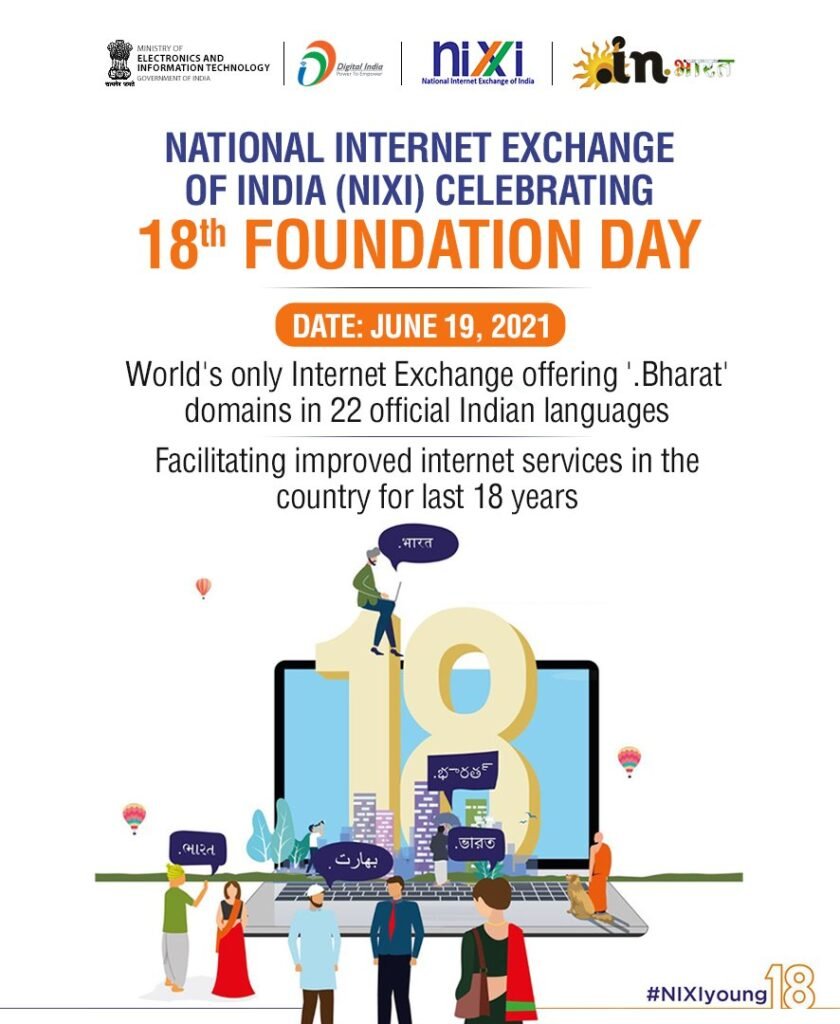Blog
June 21st Current Affairs
- June 21, 2021
- Posted by: admin
- Category: Culture Current Affairs Daily News Defense & Security Disaster Management Economy Education Environment & Ecology Ethics Geography Governance Health History International Relation Persons in News Polity Science & Technology Social Issues Sports Uncategorized UPSC Notification Videos
1. Guidelines for parent participation in home-based learning during school closure and beyond.

IN NEWS:
Union Education Minister Shri Ramesh Pokhriyal ‘Nishank’ in his tweet said that in this ‘new normal’ of the pandemic, considering parents’ role as pivotal to children’s growth and learning, theseGuidelines aim to provide information on the ‘why’, ‘what’, and ‘how-to’ of participation and engagement in supporting children during the school closure, irrespective of their literacy levels. Home is the first school, and parents are the first teachers, he added.
KEY POINTS:
- The guidelines on home based learning emphasize on the need for parents to create a safe and engaging environment and a positive learning environment, have realistic expectations from the child, take care of health and eat healthy, while at the same time having fun with children.
- These guidelines are meant not only for parents but also for caregivers, other family members, grandparents, community members, older siblings who all are engaged in promoting the welfare of children.
- The guidelines provide many simple tips for parents and others to facilitate children in Home based learning.
- These suggestive activities are in accordance with the various stages of school education as per NEP 2020. Age-appropriate art activities have been categorized on basis of 5+3+3+4 system viz Foundation Stage (Age 3-8yrs); Preparatory Stage (Age 8-11 yrs); Middle Stage (Age 11-14yrs); and Secondary Stage: From Adolescent to Adult age (Age 14-18 years).
- The activities are simple and suggestive, which can be adapted and adopted to local needs and contexts.The Guidelines appreciate the role of Art as a therapy for children under stress or trauma.
- The Guidelines lay significance on improving children’s learning by monitoring and addressing their learning gaps.
- Collaboration of parents with teachers in documenting and reflecting on the progress that children are making in their learning is important for both teachers and parents.
- The Guidelines also advise the schools to involve parents by providing information and ideas on helping students at home with homework and other curriculum-related activities, decisions, and planning, and involving them in school decisions.
- Resources like sending Newsletters, emails, memos, etc. may be provided to parents.
SOURCE:PIB
2. NIXI celebrates its 18th Foundation Day.

IN NEWS:
National Internet Exchange of India (NIXI) today celebrated its 18th Foundation Day.
KEY POINTS:
- For the last 18 years, NIXI has been contributing to Indian Internet Ecosystem.
- NIXI, the first Internet Exchange of the country facilitate peering of ISPs among themselves for the purpose of routing the domestic traffic within the country, instead of taking it all the way to US/Abroad, thereby resulting in a better quality of service and reduced bandwidth charges for ISPs by saving international currency on International Bandwidth.
- NIXI is also the .IN Registry managing India’s country code top level domain (ccTLD) – .IN. NIXI also manages the National Internet Registry of the country delegating Internet Protocol addresses (IPv4 and IPv6) and Autonomous System numbers to the Indian Affiliates.
- On the occasion of completing 18 years, the National Internet Exchange of India hosted a webinar on “Digital Economy – expanding footprints”.
Important Information:
About NIXI
- National Internet Exchange of India (NIXI) is a not-for-profit organization working since 2003 for spreading the internet technology to the citizens of India through the following activities:
- Internet Exchanges through which the internet data is exchanged amongst ISPs and CDNs.
- .IN Registry, managing and operation of .IN country code domain and. भारत IDN domain for India.
- IRINN, managing and operating Internet protocol (IPv4/IPv6).
SOURCE:PIB
3. World Sickle Cell Disease Day 2021

IN NEWS:
- To commemorate the World Sickle Cell Disease (SCD) Day on 19th June, the Ministry of Tribal Affairs (MOTA) flagged off mobile vans under the Unmukt project for strengthening screening and timely management of SCD in tribal districts of Jharkhand and Chhattisgarh.
- The United Nations General Assembly (UNGA) adopted a resolution recognising SCD as a public health problem on 22th December, 2008.
- The UNGA also recognised SCD as one of the first genetic diseases.
KEY POINTS:
Sickle Cell Disease:
- It is an inherited blood disease which is most common among people of African, Arabian and Indian origin.
- It is a group of disorders that affects hemoglobin, the molecule in red blood cells that delivers oxygen to cells throughout the body.
- People with this disease have atypical hemoglobin molecules called hemoglobin S, which can distort red blood cells into a sickle, or crescent shape.
- This blocks blood flow and oxygen from reaching all parts of the body.
- India alone is home to about 1,50,000 patients with SCD and about 88% of Sickle Cell Anemia (SCA) cases in Asia.
- The disease in India occurs predominantly in eastern Gujarat, Maharashtra, Madhya Pradesh, Chhattisgarh, western Odisha and in pockets of the Nilgiri Hills in north Tamil Nadu and Kerala.
- The disease is prevalent among tribal communities (including children).
- As per MOTA, SCD is affecting more women and children and nearly 20% of tribal children with SCD die before reaching the age of two, and 30% children die before reaching adulthood.
Symptoms:
- It can cause severe pain, referred to as sickle cell crises.
- Over time, people with sickle cell disorders can experience damage to organs including the liver, kidney, lungs, heart and spleen. Death can also result from complications of the disorder.
Treatment:
- Medication, blood transfusions and rarely a bone-marrow transplant.
SOURCE:TH
4. Strategy to Promote Medical, Rural and MICE Tourism.

IN NEWS:
- The Ministry of Tourism has formulated three draft strategies with roadmaps for promoting Medical and Wellness Tourism, for development of Rural Tourism and for promotion of MICE Industry in India.
- India has been ranked 34th out of 140 countries on the World Travel and Tourism Competitiveness Index 2019, released by the World Economic Forum (WEF).
KEY POINTS:
Medical and Wellness Tourism (MWT):
About:
- Describes the rapidly growing practice of travelling across international borders to obtain healthcare services.
- It may be broadly classified into three categories – Medical Treatment, Wellness & Rejuvenation and Alternative Cures. Now it is often referred to as Medical Value Travel (MVT).
Scope in India:
- State of the Art Medical Facilities: Top of the line medical and diagnostic equipment from global international conglomerates are available.
- Reputed Healthcare Professionals: Reputation for high-quality medical training and also fluent in English to converse with foreigners.
- Financial Savings: The cost of quality of medical procedures and services are low in India.
- Alternative Cures: India has a unique advantage of offering Yoga, Ayurveda & Naturopathy for treatment.
Major Strategy:
- “Heal in India” Brand for promoting India as a MVT destination.
- Capacity building of MVT facilitator, enterprises and staff.
- Setting up of an online MVT Portal to provide one stop solution to facilitate international patients.
- Convergence of Wellness, Hospitality and Travel businesses.
Rural Tourism:
About:
- Any form of tourism that showcases the rural life, art, culture, and heritage at rural locations, thereby benefiting the local community economically and socially.
- It offers an opportunity to promote sustainable and responsible tourism and fulfill the vision of Atmanirbhar Bharat.
Scope in India:
- Indian villages have unparalleled culture, craft, music, dance and heritage to offer to the visitors.
- Well-developed agriculture and farms to provide stay facilities and experiences.
- Beautiful climate conditions and Biodiversity.
- India has coastal, Himalayan, desert, forest and tribal areas amongst others for tourists.
Major Strategy:
- State Assessment and Ranking as a tool for Capacity Building (including that of Panchayati Raj Institutions).
- Enabling Digital Technologies for Rural Tourism like enabling broadband internet infrastructure to rural areas having tourism potential.
- Developing clusters for rural tourism.
MICE (Meetings, Incentives, Conferences and Exhibitions):
About:
- The main purpose is to create a networking platform for business, industry, government and Academic Community and engage in meaningful conversations.
- MICE is also known as ‘Meetings industry’ or ‘Events industry’.
Scope in India:
- Core MICE infrastructure amenities are at par with most developed countries.
- India has consistently improved its rank in World Bank Ease of Doing Business and WEF Travel and Tourism Competitiveness Rank.
- Growing Economic Strength of India.
- India has progressed rapidly in the areas like Information Technology, and Scientific Research.
Major Strategy:
- “Meet in India” Brand for promoting MICE Industry.
- Providing Infrastructure status for financing of MICE infrastructure.
- Skill development for the MICE industry.
SOURCE:IE
